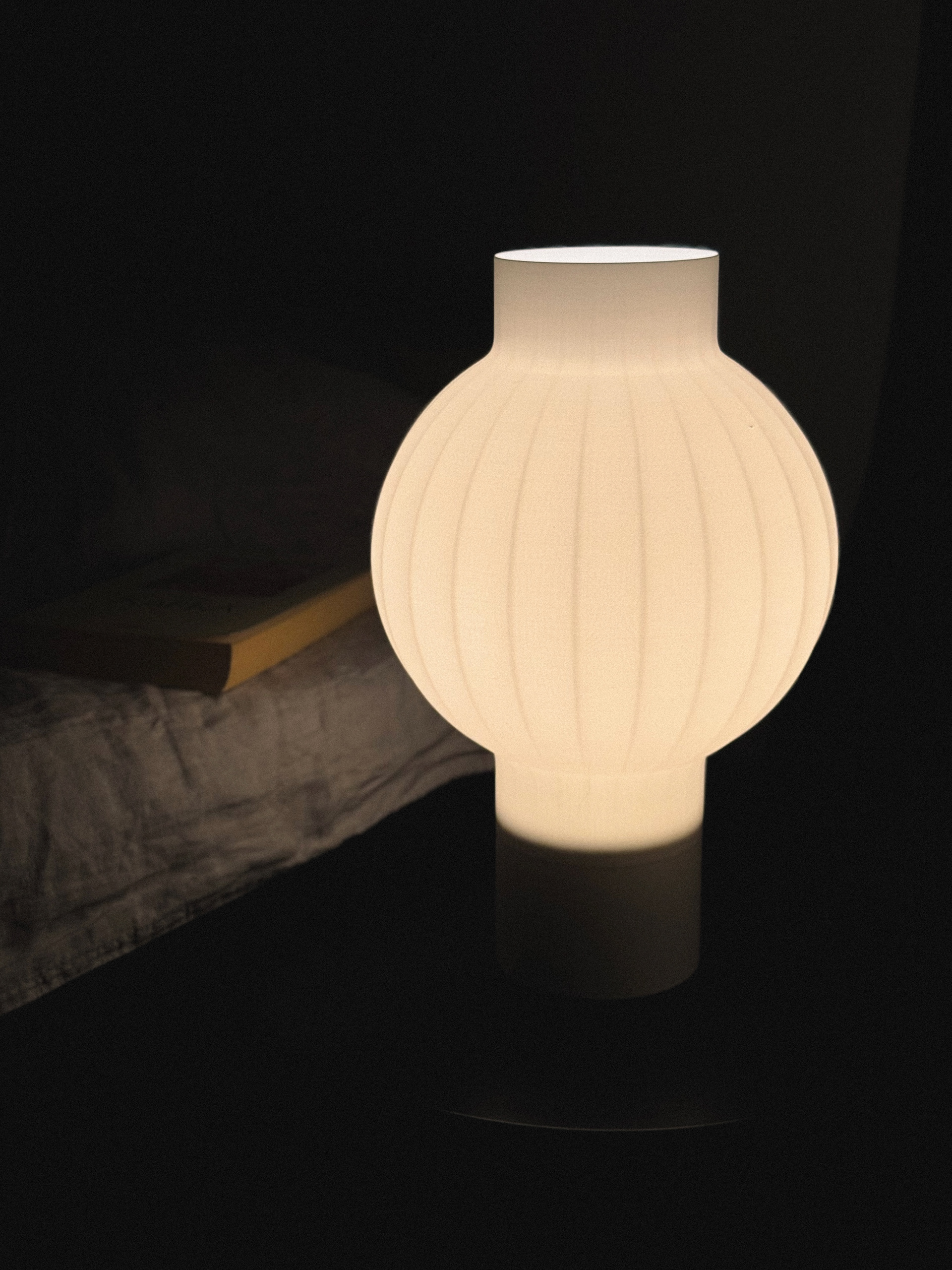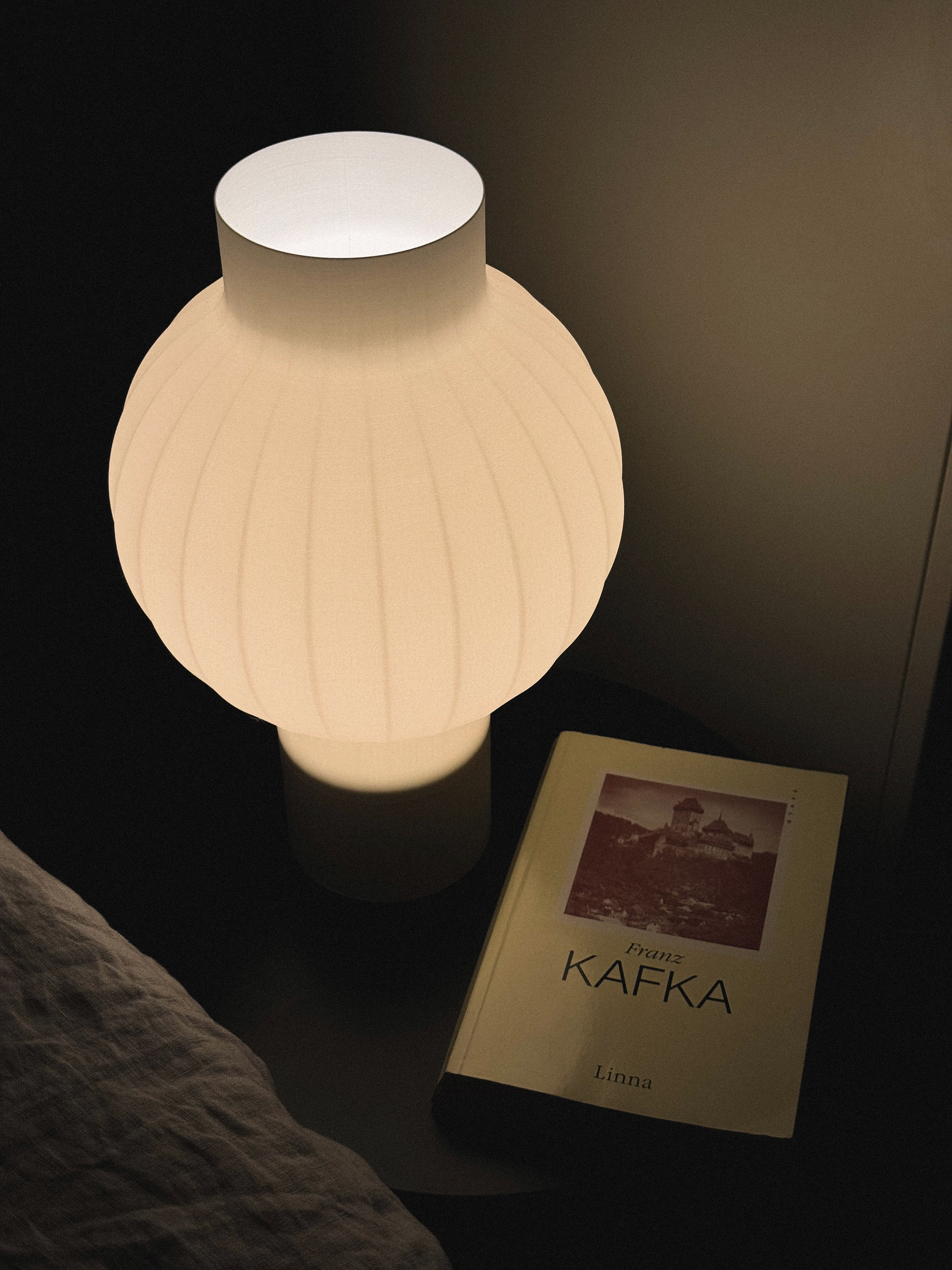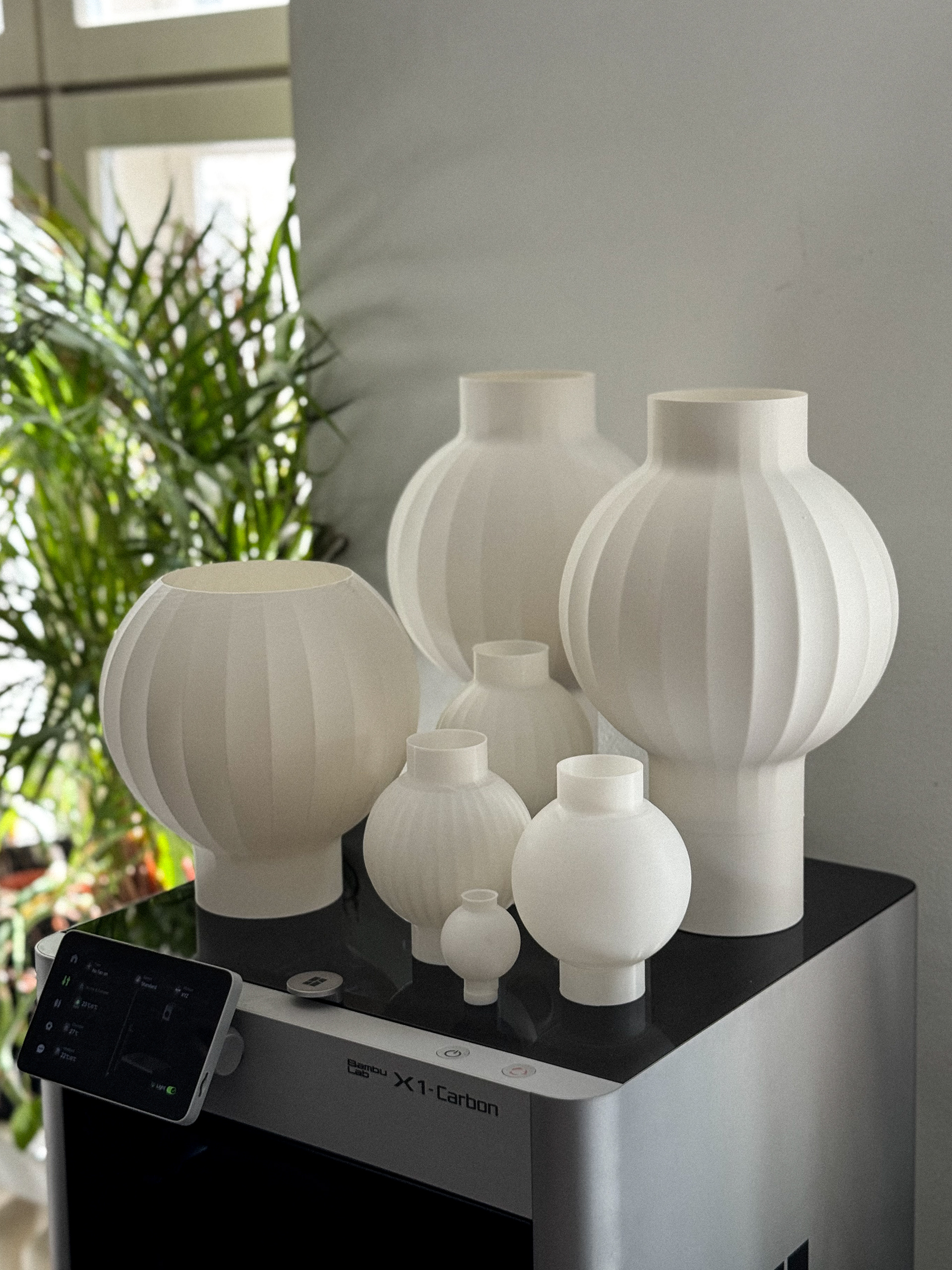TOWER LAMP
The Tower lamp (2025) began as a personal project to create a better light for night-time reading. The design was informed by the atmosphere of my refurbished Art Nouveau-style apartment, which inspired an exploration of how classical and contemporary forms can coexist. The result is a minimal composition that merges a simple pillar and sphere, with subtle ornamentation that references traditional detailing. This ornamentation is reinterpreted through a contemporary lens, with a functional ribbed texture shaped by, and shaping, the possibilities of 3D printing.
Keywords: 3D printing, Grasshopper, parametric design, lighting
The form of the Tower lamp draws from a mix of lighting and architectural influences. I aimed to combine the verticality of historic tower structures with the softness of traditional paper lamps, while preserving a distinctly modernist clarity. The lamp was designed to exist naturally in interiors where old and new elements meet. Like many contemporary homes, mine merges ornate architectural features with the presence of everyday technology. This lamp was created to complement both worlds, while confidently expressing its origin as a 3D-printed object.
From earlier experience, I knew that 3D printing spherical forms presents certain challenges. Despite this, I chose the sphere as the core of the composition, partly out of curiosity and partly out of insanity. While overhang and stepping problems can be minimized with careful settings, results often vary. The aim for this lamp was to highlight the material qualities of 3D printing and achieve smooth, atmospheric translucency with light, so the geometry had to be reconsidered with care.
Sphere 3D printing stepping issues visualized
Though I experimented with other sketches, the final form remained close to the original idea: a single sphere enclosed within a cylindrical volume. I chose to keep the shape deliberately simple, to avoid over-designing the base geometry. The form needed to be timeless, and above all, serve the lighting. This shape provides gentle ambient light and reflects upwards toward the ceiling, while the pillar base lifts the brightest part of the lamp out of the user’s direct line of sight, reducing glare during night-time reading.
To manage the printability challenges, and to introduce a visual detail that connects the lamp to paper-like materials, I created a parametric ribbing system in Grasshopper. The script allowed for real-time control over the number and depth of the ribbing divisions, making it possible to test and refine the print with small-scale prototypes. The ribbing improves print performance by reducing overhang-related failures, while also giving the shade a structured, yet fluid and morphed appearance.
I extended the ribbing almost to the ends of the cylinder to preserve a strong connection with traditional paper lamps, while allowing the surface to gradually dissolve into smoothness. These 1:2 prototypes illustrate the practical effects of the ribbing. Without it, the prints often suffer from uneven textures or complete failure, especially near the top edges. In versions where the ribbing does not extend far enough into the form, the prints become fragile and easily break apart. In contrast, the most successful model prints evenly and cleanly, even with minimal wall thickness, thanks to the ribbing guiding the printer along more stable paths.
The base follows the same cylindrical logic as the shade. It houses a lightbulb socket and features a vertical cut along the back, which allows the cable to move without shifting the lamp. This cut is somewhat experimental, but has proven functional in use, making assembly and maintenance quick and straightforward. The light source is positioned precisely at the center of the shade, while the base’s 3.6 mm wall thickness helps prevent light from bleeding through and provides enough weight to support the lamp with a stable footing.
The Tower lamp balances visual simplicity with functional precision. When turned off, it has a clean and opaque appearance. When lit, it transforms, as the printed surface becomes softly translucent, casting a warm, ambient glow that recalls paper lanterns, while offering enough clarity for comfortable reading.


